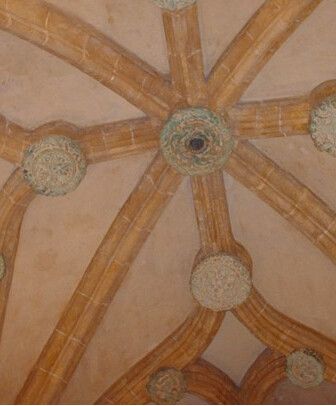
Artisan Route
The Pueblos Blancos have a close relationship with the natural environment that surrounds them and the products obtained from it. To highlight only the gastronomy

Gothic art was an artistic style developed and established in western Europe between the 12th and 16th centuries. The presence of Gothic art in Andalusia is deep, with buildings and architectural works scattered throughout the region. With the occupation of the Guadalquivir Valley by the monarch Fernando III, this style began to gain special prominence in Andalusian constructions. Although it is true that, at the height of the Reconquest, the architectural characteristics of the Gothic style sometimes merged with the Mudejar style, typical of the Nasrids who dominated most of the peninsula.
The Architectural-Monumental Gothic Route is a journey through 4 municipalities of Pueblos Blancos in which we will visit different emblematic buildings of an eminent Gothic character.
We will begin our route in the town of Olvera, a town located in the northeast of the Sierra of Cádiz. This small mountain village is home to the Iglesia del Socorro, a Gothic-Mudejar style temple with a single tower, erected by Mr. Juan Téllez. It currently houses the images of Nuestro Padre Jesús Cautivo and Nuestra Señora del Socorro.


Just 20 minutes away Algodonales is located, our second stop on the Gothic Route. The municipality is located in the heart of the Sierra of Cádiz and close to the Sierra of Líjar. On the outskirts of the town is the Ermita de la Virgencita, a small neoclassical and neo-baroque sanctuary. Built between the 18th and 19th centuries, it is an important place of worship as it is visited by the whole village during the romería held on the last weekend of May.


From Algodonales, our next destination is 40 km away. Bornos is a town located in the Sierra of Cadiz, where we can visit the Castillo-Palacio of Los Ribera, an old Muslim fortress that was restored and converted into a house after the reconquest. Despite being eminently Renaissance in style, it has late Gothic elements such as the decorations on a doorway located on the north gallery. A visit to the beautiful gardens surrounding the building is a must.


We then head to Arcos de la Frontera, which is only 15 minutes away from Bornos and is located in the northwest of the province of Cadiz. In this municipality, we can visit the Capilla de la Misericordia, a building founded in 1940 that originally served as a home for abandoned children and a hospital for women. Its façade is Gothic in style and inside it houses the only preserved portraits of the Marquises of Cádiz.
Considered a jewel of the 15th century due to the fusion of architectural styles, the Casa-Palacio del Conde del Águila is an emblematic building in Arcos that we can also visit during our visit to the town. The mixture of late Gothic and Mudejar styles makes it a monument of great architectural value.
In Arcos there are other buildings that demonstrate the coexistence of different architectural styles. The Basílica Menor de Santa María is the oldest temple in the municipality which, having been under construction for six centuries, houses styles such as Gothic, Baroque and Plateresque. Its main façade is a mixture of late Gothic and Isabelline, and inside, the ground plan of the hall is also of an eminently Gothic character. It has three naves of the same height, separated by circular pillars that support complex star-shaped ribbed vaults. Following the same style, there is a mural painting.
Another clear example of the fusion of styles in the same building is the Church of San Francisco, built thanks to donations from Beatriz, duchess of the town. After serving as a Propaganda Fide school and being subject to the confiscations of Mendizábal, only the church remains standing. The church consists of a central nave to which are attached three chapels in different styles, including Baroque.







The Pueblos Blancos have a close relationship with the natural environment that surrounds them and the products obtained from it. To highlight only the gastronomy

The Baroque refers to the predominant cultural, artistic and architectural period between the 17th and 18th centuries. In Andalusia, the Baroque does not stand out

Gothic art was an artistic style developed and established in western Europe between the 12th and 16th centuries. The presence of Gothic art in Andalusia